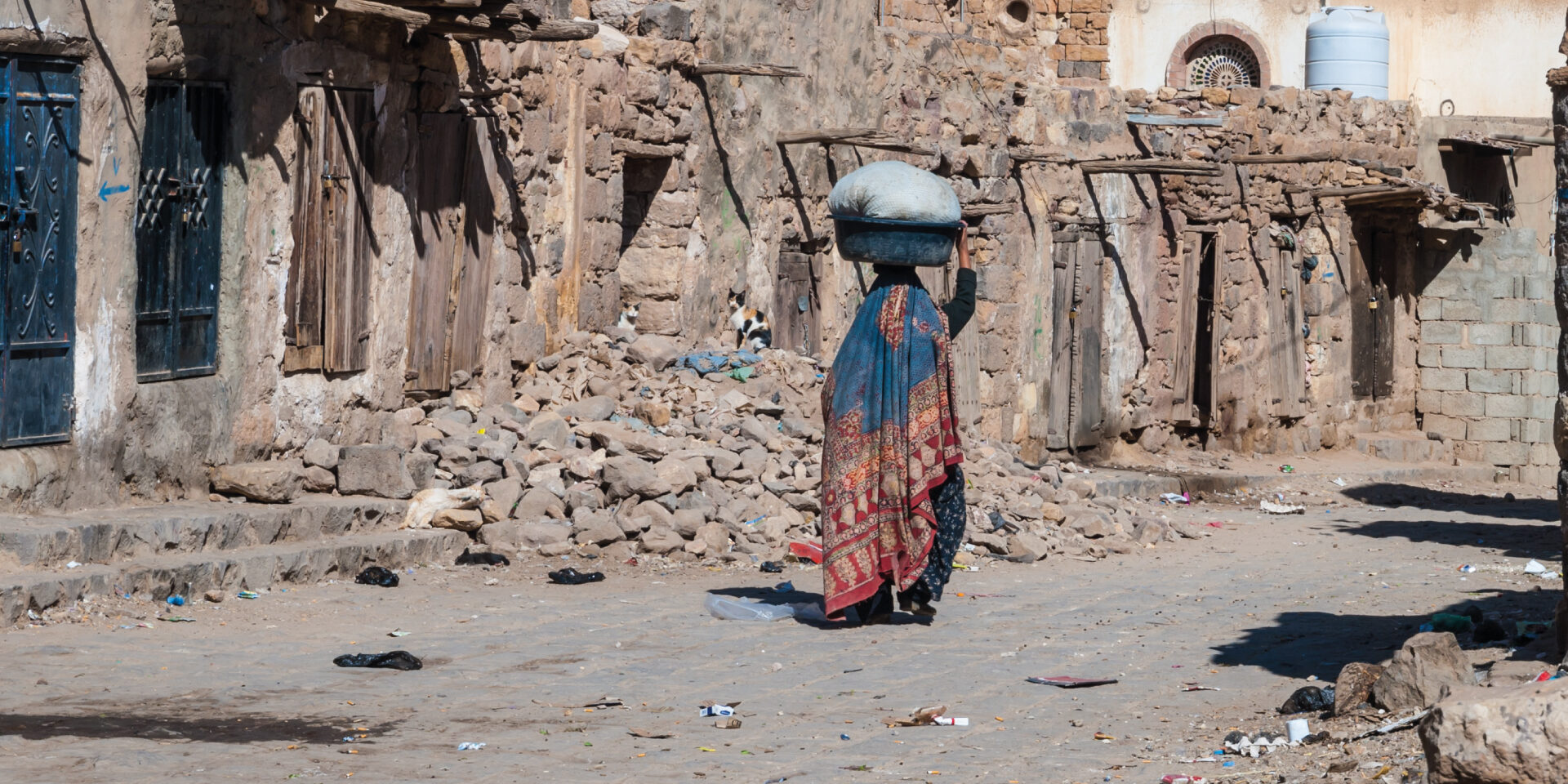
Creating a Sustainable Peace Deal in Yemen: A Discussion with Ahmed Al Khameri
January 19, 2021 | 4 Minute ReadInvesting in understanding Yemen's local conflict drivers and integrating this knowledge into peacebuilding and stabilization efforts is central to addressing the complexity that characterizes and feeds the ongoing crisis.
Six years into the Yemen conflict, the war shows no sign of abating. The situation is dire: 80% of Yemen’s population of 30 million requires some form of humanitarian assistance; nearly half the population is in acute need. With violence spilling across Yemen’s borders and threatening maritime security in the Red Sea’s strategically important Bab el-Mandab Strait, regional stability is at risk.
Two years since the Stockholm Agreement — an UN-brokered agreement aiming to build confidence among the warring parties through targeted ceasefires and prisoner exchanges — international peace efforts remain fragile and halting. A deadly attack on a newly formed “unity” government that brought rival Saudi- and UAE-backed factions together has once again upended hopes for stabilizing the conflict.
Chemonics International’s Ahmed Al Khameri has dedicated his career to supporting the peace and development of his native Yemen. Ahmed discusses how investing in understanding local drivers of conflict and integrating this knowledge into peacebuilding and stabilization efforts is central to addressing the complexity that characterizes and feeds the ongoing crisis.
Why is there war in Yemen?
Yemen’s war is often viewed as a clash between the Zaydi Shia movement Ansar Allah, also known as the Houthis, based in northern Yemen and an alliance of actors spread across southern, western, and eastern Yemen. With Iran supporting Ansar Allah and a Saudi-led international coalition backing the alliance, commentators often cast the crisis as a proxy war.
In reality, a blend of regional competition and local conflict over power and wealth drive the war. Yemen’s conflict is a multi-layered and complicated power struggle that reflects historical grievances over political and economic exclusion as much as current domestic and regional politics. Amid ongoing instability, longstanding sectarian, tribal, and provincial tensions have come to the fore, generating sub-conflicts within the principal warring factions, complicating international efforts to stop the war.
How has the war affected local communities?
The conflict has devastated local communities. The cultural and religious factors that color the war manifest themselves at the local level, igniting conflicts within formerly unified communities by highlighting differences in values, beliefs, and interests. For example, Ansar Allah redesigned the educational curriculum, flaring local tensions along religious lines.
The conflict is damaging Yemen’s social fabric. Already marginalized groups like people with disabilities, Muhamasheen populations (a visible Black-Yemeni minority who suffer from caste-based discrimination), internally displaced people, and Ethiopian and Somalian migrants often experience multiple rounds of displacement and fall victim to violence and injustice. As this social and cultural fallout continues, women and children bear the brunt of a sharp uptick in domestic violence.
Have peace talks worked?
There have been two major efforts to stem the conflict: the Stockholm Agreement in 2018 and the Riyadh Agreement in 2019.
The Stockholm Agreement saved the city of Hudaydah from imminent conflict. The Riyadh Agreement has helped reconcile differences between different factions of the government of Yemen. In December 2020, the government announced a new cabinet with representatives from different factions.
To date, national peace talks have not, however, reduced the level of violence. Clashes have increased. Conflicting parties are failing to seize the opportunities presented by the agreements. A recent attack on Aden Airport, which appeared to target members of the new “unity” government, has further complicated peace efforts.
How can peace talks perform better?
International peace efforts must broaden the aperture for participation. To date, internationally sponsored talks have not incorporated the full array of Yemeni stakeholders. Nor have the various armed groups been sufficiently brought into discussions.
For mediators, inclusion can be a double-edged sword: bringing many actors to the table can reduce the chance of securing a peace deal, but, reaching an agreement based on a narrow set of interests also risks failure. A narrowly defined deal may not reflect evolving realities on the ground, complicating efforts to foster local ownership.
Yemen’s challenge is to enable a peace process and deliver peacebuilding interventions that encourage buy-in from the ground up. Of course, creating a genuinely inclusive process is difficult. It requires addressing a diversity of actors and interests operating at national and sub-national levels. However, demonstrated international commitment to supporting inclusive processes could become an incentive for collaboration among conflicting parties. A genuinely inclusive peace process will help build the trust necessary for a representative and functional Yemeni government to form.
How can international efforts better support peacebuilding?
Five years of conflict, fragmentation, and autonomy have shifted power to the local level. The lack of a common understanding between mediators and donors on the nature of local conflict, and its impact on national dynamics, limits peacebuilding efforts. To reflect the splintered nature of the war, peace talks must recognize local conflict dynamics.
A rigorous and systemic understanding of different actor’s motivations for engaging in violent and peaceful behavior must act as the foundation for peacebuilding initiatives. International donors can support the peacebuilding process by researching different group’s positions, interests, and demands. This information will allow mediators to identify evidence-based solutions to peacebuilding stumbling blocks.
Mapping out the drivers of conflict uncovers what issues sustain the conflict. Equipped with a better understanding of the conflict landscape, mediators can identify effective entry points for peacebuilding interventions to support local stability and increase local buy-in for agreements.
Building a shared understanding of conflict drivers within the international community will allow actors to better integrate insights into stabilization, humanitarian, and development efforts. Improving and harmonizing knowledge will also help ensure that humanitarian, development, and peace efforts complement one another.
*Banner photo caption: A woman walks down a road in Sanaa, Yemen.
Posts on the blog represent the views of the authors and do not necessarily represent the views of Chemonics.
























